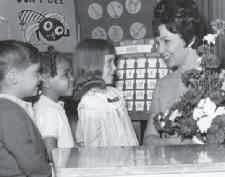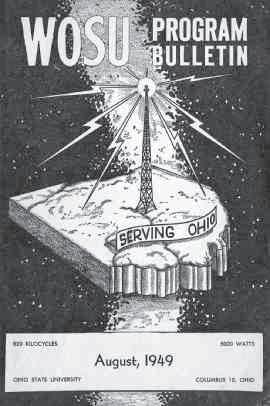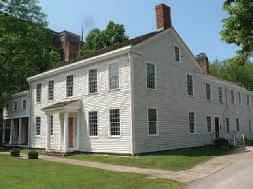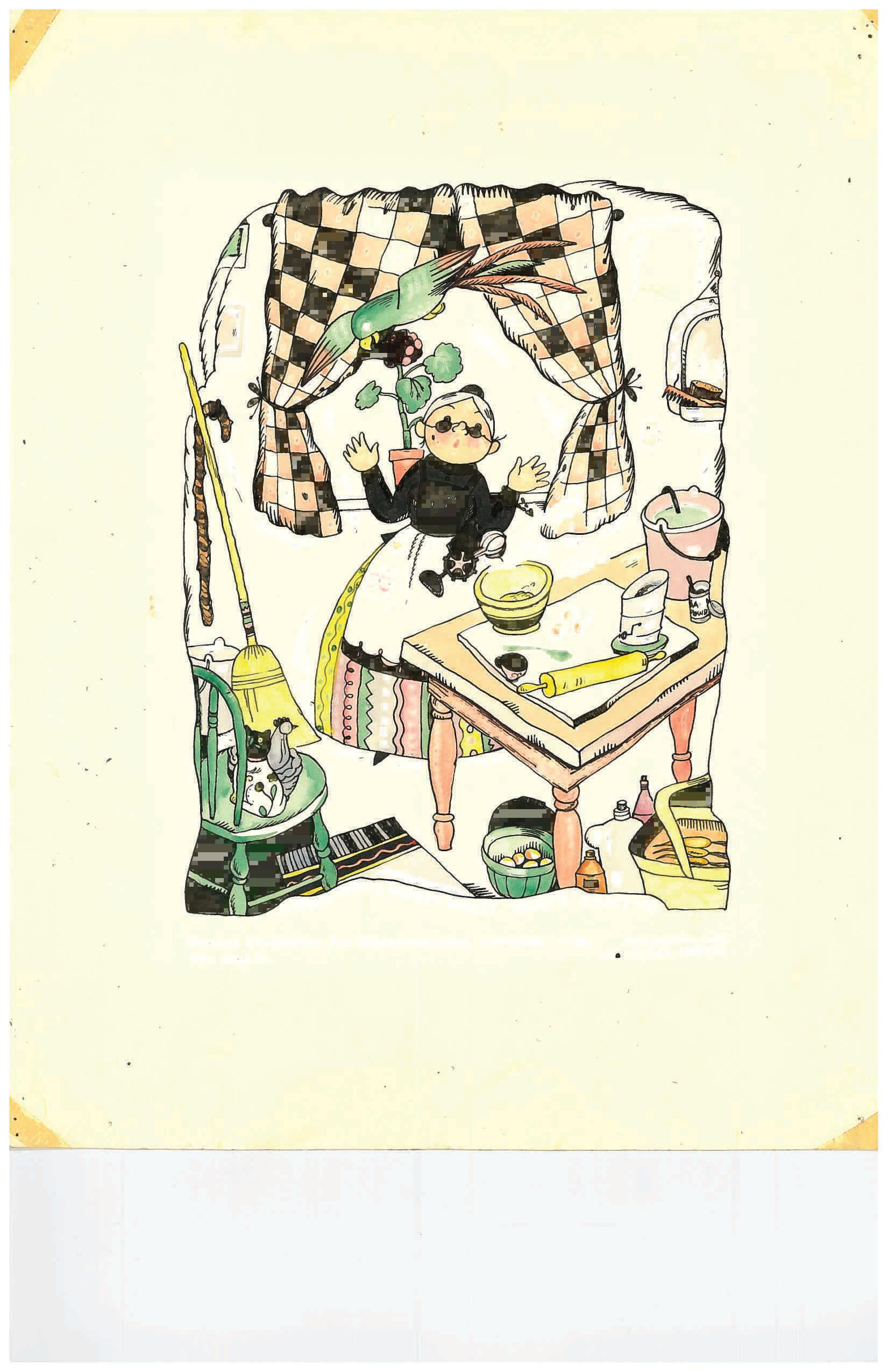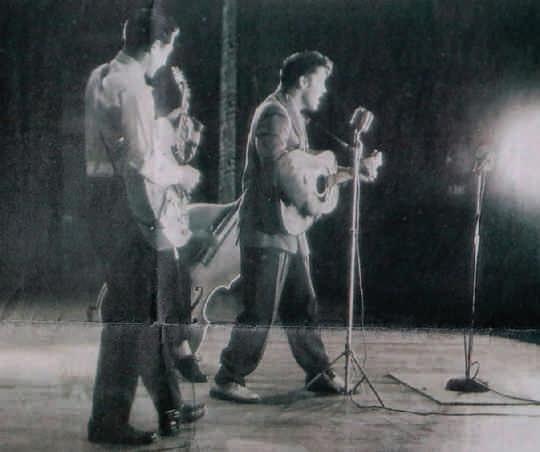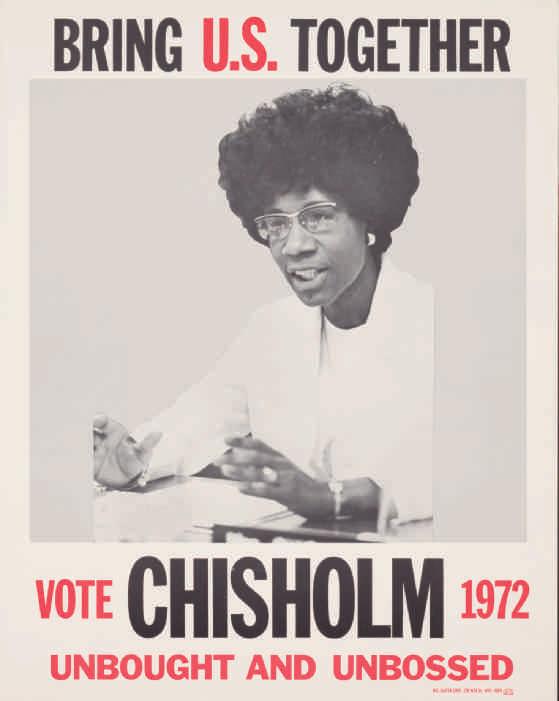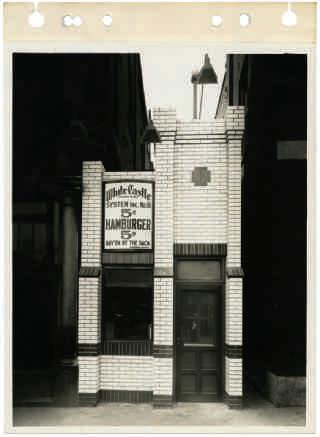
12 minute read
Anything Went! Children’s TV Hosts of the Baby Boom
Media Heritage photo
Anything Went!
CHILDREN’S TELEVISION DURING THE BABY BOOM BY JOHN KIESEWETTER
Nothing makes baby boomers throughout Ohio glow like an old Philco TV more than the mere mention of just a word or two: Barnaby. Salty. Uncle Al. Captain Penny. Uncle Orrie. Captain Al. Flippo, the King of the Clowns.
They were must-see TV for kids in the three-channel, black-and-whitetelevision world of the 1950s and early ‘60s, depending on what stations could be tuned in by monkeying with a V-shaped “rabbit ears” antenna in their part of the state. Sure, children could enjoy the Mickey Mouse Club or Howdy Doody on network TV. But the local kiddie TV morning or afternoon show hosts were special. They were theirs. Kids could see them at supermarket openings, summer festivals, holiday parades, amusement parks, the zoo or sometimes at their school carnival. They’d talk to you and hand you an autographed photo. You couldn’t do that with Captain Kangaroo. LIVE AND UNPREDICTABLE
Compared to today’s TV universe—500 channels and endless streams of perfect productions with high-tech, computer-generated effects—live children’s TV programs of the 1950s and ‘60s look ancient and crude when you see them on YouTube today. But the local shows were live and unpredictable, even though the youngest viewers knew the lost puppet would safely return, cartoons or Three Stooges shorts would be screened and kids would do the Hokey Pokey with Uncle Al. And that’s what it’s all about, the memories of childhood touchstones. Kids who grew up in the Cleveland area fondly remember Barnaby, the ukulele-strumming elf with pointy ears who lived in the Enchanted Forest with various puppets and introduced Popeye cartoons. Barnaby, starring Norwalk native Linn Sheldon, aired from 1955 to 1967 on WKYC, then moved to start-up independent station WUAB-TV until 1990. Cleveland kids also watched Franz the Toymaker.
Two generations of Cincinnati viewers sang and danced with Al and Wanda Lewis on the Uncle Al Show, which aired on WCPO from 1950 to 1985. Uncle Al had a variety of sidekicks, including Lucky the Clown (Jack Williams).
WBNS-10TV
Columbus puppeteer Luci VanLeeuwen sits with fans in front of Mr. Tree on her Luci's Toy Shop set at WBNS, where she broadcast weekday mornings from 1960 to 1972.
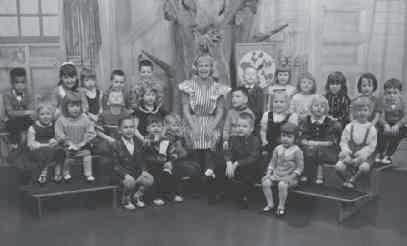
In terms of longevity, Barnaby and Cincinnati’s Uncle Al Show are Ohio’s kiddie TV champs, each airing 35 years. Longtime Hillsboro resident Al Lewis (Slowik) played his accordion while wearing a plaid suit coat and straw hat on WCPO from 1950 to 1985. After wife Wanda joined him in 1956 as “Captain Windy” in a cape and white boots, Uncle Al aired nationally on ABC in 1958 and 1959. Two generations of viewers still can sing Uncle Al’s daily advice: “Put your toys away, don’t delay, help your Mommy have a happy day.” At Cincinnati’s WKRC, four-time Purple Heart recipient Glenn Ryle put on a riverboat captain’s outfit in 1955 to become Skipper Ryle of the fictional River Queen. He played Betty Boop and Jonny Quest cartoons, and introduced young viewers to Dr. Albert Sabin’s polio vaccines and Play-Doh. Ohio TV stations also gave captain’s rank to Captain Hal (Fryar) on Youngstown’s WKBN; Captain Cotton on Toledo’s WSPD; Captain Glenn (Rowell) on Cleveland’s WNBK (now WKYC) and Cincinnati’s WLWT; and Cleveland’s Captain Penny, who inexplicably was a train engineer, not a boatman, on WEWS. In Toledo, Jerry Carr wore a white wig and nautical cap for the mythical Toledo Queen on
WTOL Captain Cotton and Salty from 1960 to 1963. Dick Beach’s Salty the Sailor Clown took over until Mr. T, WTOL, Toledo 1967, when he left to become Boston’s Willie Whistle children’s host. Toledo kids also watched Mr. T—not to be confused with the 1980s A-Team actor and movie star. WTOL’s Jack Kesling did skits and schtick as Mr. T while competing with Salty for kids’ attention in northwest Ohio and with Detroit shows such as Milky’s Party Time and the Soupy Sales Show. THE KING AND QUEEN
The king and queen of Columbus children’s TV were WBNS’s Flippo The Clown starring Bob Marvin and Luci’s Toy Shop with Luci VanLeeuwen. Flippo’s fans recall he arrived for work in his bubble-shaped Isetta microcar. Flippo filled his shows with magic tricks, but perhaps his best one was staying on Columbus TV for 30 years, and taking his act to the new QUBE cable system in the early 1980s. Luci’s Toy Shop (1960–1972) was populated by puppets—not toys—which were a staple of live, local kids shows: Cleveland’s Woodrow The Woodsman, the Barnaby spinoff, on WKYC; Glenn Rowell’s Captain Glenn’s Bandwagon on Cincinnati’s WLWT and Captain Glenn’s Boarding House on Cleveland‘s WKYC; Tic Tock Toy Shop and The Uncle Orrie Show on Dayton’s WHIO; Sam Fitzsimmons’ For Kids Only on Lima’s WIMA (now WLIO); and the Uncle Al show.
Dayton’s Larry Smith made his puppeteer debut at 14 on Tic Tock Toy Shop with Joe Rockhold’s Uncle Orrie. He continued to ride a bus after school to WHIO to do puppets for the Uncle Orrie Show, went to The Ohio State University for a year and dropped out to take his puppets to Uncle Al. The nationwide UHF explosion in 1968 made Smith the first huge star on Cincinnati’s WXIX-TV with his Rudy, Teaser and Hattie the Witch puppets. Tiny Tim dropped by to serenade Hattie, and 16 magazine published photos of teen heartthrob Bobby Sherman visiting the show.
TV PIONEERS
Kids shows had been part of the TV picture since Ohio’s first commercial station, Cleveland’s WEWS, sent pictures through the air Dec. 17, 1947. Gene Carroll’s Uncle Jake’s House premiered in 1948, and aired until the mid-1950s. These TV pioneers made it up as they went along. When Soupy Sales, known as Soupy Hines in 1951, needed a punch line for a cowboy skit on his Soupy Hines children’s show on Cleveland’s WXEL (now WJW), he asked someone to throw a pie at his face, a gag he took to Detroit for his 1955 national ABC show.
Comedian Tim Conway, a Willoughby native, once said Barnaby star Sheldon “could take 20 cents worth of props and make your imagination run.”
Jack Bennett, star of Akron’s WAKR (now WVPX) Professor Jack Show (1963–1966), said years later that “anything went, there was no script.” Once Bennett ran out of material so he grabbed an Akron Beacon Journal to teach kids how to make a paper hat, and did an improv comedy routine that ended with a huge crumpled ball of paper instead of a hat.
Musician Bob Marvin got the Flippo gig in 1953 when the only other candidate failed to show for WBNS’s Tip Top Bandwagon audition. Tip Top Bread was promoted by New York’s Ward Baking Co. through kids shows across the country in the early 1950s, including Tip Top Clubhouse shows on Youngstown’s WKBN with Clancy the Cop and on Cleveland’s WNBK (now WKYC) with Uncle Joe (Bova), the Cleveland native who later appeared in Serpico, Happy Days and Kojak. Uncle Al started after Lewis opened the WCPO garage door one hot morning in 1950 and invited kids to watch him do his accordion night club act on Al’s Drug Store. YOU CAN’T FOOL MOM
Weatherman-announcer Ron Penfound became Captain Penny in 1954 when his WEWS boss needed an Our Gang comedies host, and put a railroad cap on his head. Loyal viewers can still recite his words of wisdom that ended every show: “You can fool some of the people all of the time, and all of the people some of the time, but you can’t fool Mom. She’s pretty nice and she’s pretty smart. You listen to her and you won’t go far wrong.” Southwestern Ohio children were lucky because they could be in the studio audience to win the “best smile” contest on Skipper Ryle, be in a group photo with Captain Windy and Uncle Al or get doused with water on Uncle Orrie. After waiting months for tickets, of course. Six kids also appeared on Romper Room in the 1950s, where local hosts in Columbus, Cleveland, Toledo, Youngstown and Cincinnati used franchised content. Children at home thought the teacher could see them when she looked through her “Magic Mirror” and rattled off first names. Kids all across Ohio, however, could see their TV heroes at public appearances: Flippo at Buckeye Lake, a Lancaster Cub Scout banquet and the Mount Vernon Montgomery Ward store; Captain Penny at the Smithville Ox Roast and Ravenna Fire Department Christmas party; Mr. T at the Oak
OHIO KIDS TV TRIVIA
Flippo the Clown star Bob Marvin gave up his dance band career in 1960 when Flippo “became nearly a 24-hour job,” doing 100 appearances a year plus his daily WBNS show. Ron Penfound (Cleveland’s “Captain Penny”) and Glenn Ryle (Cincinnati’s “Skipper Ryle”) each appeared on ABC’s The Rifleman during the 1961–1962 TV season. Cleveland TV managers looking for a Popeye cartoon host in 1955 rejected all who auditioned in sailor costumes to hire Linn Sheldon, dressed like a leprechaun from Finian’s Rainbow, for the kids show that would be called Barnaby on WNBK (now WKYC). Comedian Soupy Sales was known as Soupy Hines on Cleveland’s WXEL (now WJW) in 1951 when he was first hit in the face with a pie, a gag he repeated an estimated 25,000 times in his career. Years before creating The Twilight Zone, Rod Serling was a staff writer at Cincinnati’s WLWT in the early 1950s, where he was asked to audition in clown makeup as a sidekick for Tooney the Clown on the Half Pints Club show. Franz the Toymaker Cleveland Memory with Ray Stawiarski aired on Columbus's WBNS in 1962–1963 before moving to Cleveland’s WJW in 1964. The Cleveland Indians hired Ron Penfound as their Municipal Stadium public address announcer in 1969, three Franz the Toymaker, WJW, Cleveland years before WEWS canceled Captain Penny. Hattie the Witch, Rudy, Teaser and Larry Smith’s 40 other puppets, and his castle and tree house sets are on display in the Media Heritage collection at the National Voice of America Museum of Broadcasting in West Chester, north of Cincinnati. The Mickey Mouse Club was hosted by Cincinnati native Jimmie Dodd, who also wrote all the songs that opened the show.
Harbor mother-daughter dinner; Salty the clown at the Elmore kiddie parade; Sam Fitzsimmons at the Allen County Fairgrounds. An estimated 26,000 jammed into the Cincinnati Zoo to see Skipper Ryle in 1965. Captain Penny helped draw 18,000 to a Cleveland Ford dealership one weekend in 1966. About 30,000 assembled to see Uncle Al fly Santa into Cincinnati’s Lunken Airport in the mid-1950s. By the 1970s, local kiddie shows were fading from the TV picture. Animated shows were less expensive than the cast and crew required for a local show. As morning TV news grew, stations dropped kids shows to keep adult viewers tuned in. All baby boomers were left with were their fond memories of a magical bygone era.
John Kiesewetter is TV/media reporter for Cincinnati Public Radio’s WVXU-FM. He has written about television since 1985.
LEARN MORE LEARN MORE
From Captain Penny to Superhost: Tales from the Golden Age of Cleveland Children’s Television, 1950s–1970s by Mike and Janice Olszewski takes readers “behind the plywood sets, costumes, and greasepaint for a close-up look at some remarkable personalities. … Despite their low-budget productions, those classic shows and hosts … formed lasting bonds with generations of Northeast Ohio kids.” In his autobiography, Barnaby and Me, Cleveland children’s television host Linn Sheldon recounts his career “with an exceptionally good ear for a story and a deft touch with words” making him “eminently qualified to tell this touching and very human tale.” David Kamp provides readers with a national perspective in Sunny Days: The Children’s Television Revolution that Changed America, a “behind-thescenes story of the cultural heroes who created the beloved children’s TV programs Sesame Street, The Electric Company, Mister Rogers’ Neighborhood, Free to Be…You and Me and Schoolhouse Rock!”
Photo credits: Page 38, clockwise from top left: Cleveland Memory; Cleveland Memory; Cleveland Memory; Ohio History Connection Archival Collections; WHIO. Page 39, clockwise from top left: Media Heritage; Media Heritage; Mahoning Valley Historical Society; Cleveland Memory; WTVG; Media Heritage Clockwise from top left: Cleveland’s beloved Barnaby (Linn Sheldon) chats with Cub Scouts; his former sidekick Woodrow the Woodsman (Clay Conroy) waves to viewers; Captain Penny (Ron Penfound) poses with Ticket Agent Wilbur Whiffenpoof (Earl Keyes); Columbus’ s Flippo the Clown (Bob Marvin) prepares for a show with WBNS coworkers; and Dayton’ s Uncle Orrie (Joe Rockhold) flashes the smile seen on WHIO in the 1950s and ‘60s.
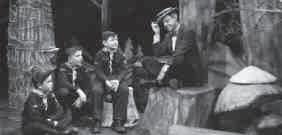
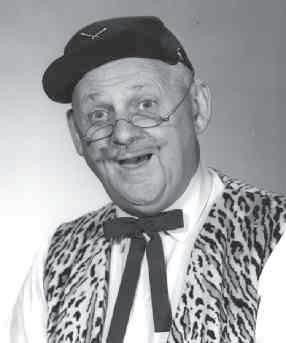
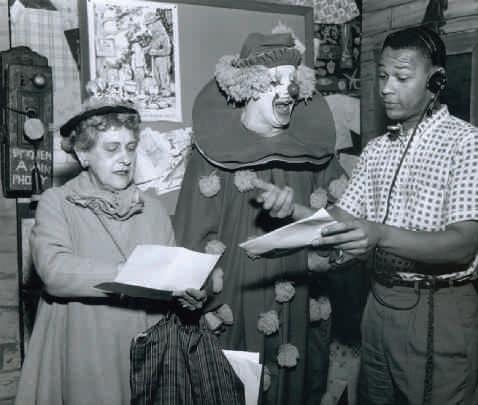
Clockwise from top left: Cincinnati’ s Skipper Ryle (Glenn Ryle) opens the prize chest on his fictional River Queen; WLWT's Mr. Hop (Dave Manning) and sidekick Artie the Mouse starred in Cincinnati’s first recorded kids show in the 1960s; Youngstown's Clancy the Cop hosted WKBN's Tip Top Clubhouse in 1954; Miss Barbara (Barbara Plummer) smiles at students on Cleveland’ s Romper Room; Toledo's Salty the clown (Dick Beach) greets a young fan; two lucky viewers join Cincinnati's Uncle Al (Al Lewis) on his spaceship.
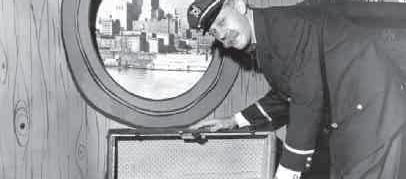
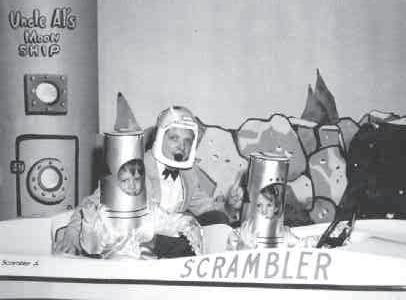
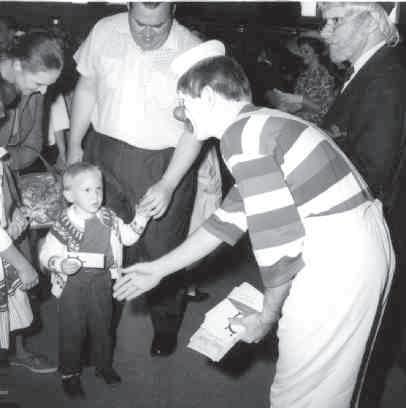
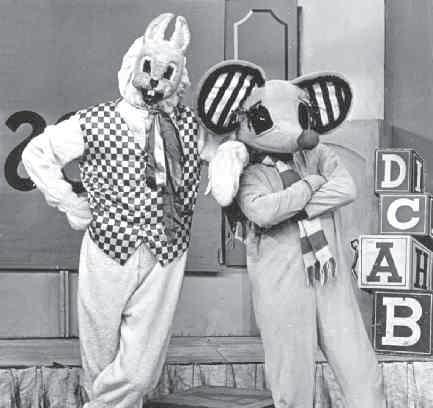
SONGS & SAYINGS
A birthday cake magically appeared on Luci’s Toy Shop on Columbus’s WBNS when she sang: “I wish I had a birthday cake, I wish I had a birthday cake right here in the toy shop.” Flippo the Clown star Bob Marvin closed his Columbus show by telling kids: “Love ya, keep smiling, and don’t fight!” Kids made things disappear on Cincinnati’s Uncle Al Show by chanting: “Alakazam one! Alakazam two! And…Poof!” A Romper Room host would “see” kids watching at home by looking through her “Magic Mirror” and saying: “Romper, bomper, stomper, boo. Tell me, tell me, tell me, do. Magic Mirror, tell me today: Did all my friends have fun at play?”
